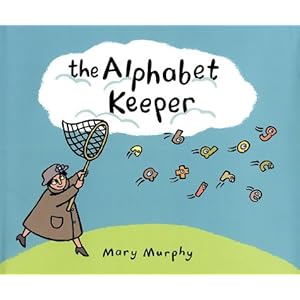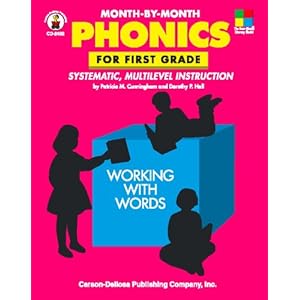
TOOBALOO
TOOBALOO
Every classroom needs a supply of TOOBALOOs!!!
The TOOBALOO is a phone-like device that allows children to hear themselves clearly while speaking softly into it. The design of the TOOBALOO magnifies their voice allowing them to hear their sounds and words distinctly.
I use TOOBALOOs during centers for small groups to practice reading, during or after a guided reading group, during independent reading or DEAR time. Also TOOBALOOs have been great to use while students practice writing. Have the students reread their stories into the TOOBALOO for editing.
TOOBALOOs, pointers, highlighter rulers, highlighter tape, etc are all great additions to any literacy centre. These simple things increase excitement and enthusiasm for reading.
As Maya Angelou says, ‘ Any book that helps a child to form a habit of reading, to make reading one of his deep and continuing needs, is good for him.’
I will use any material or resource I can to get a book into a child’s hands.
Unfortunately, I couldn’t find David Letterman’s Top Ten List on Reading but I found Carol Gorman’s.
Carol Gorman's Top Ten reasons to Read, Read, Read!
10. Reading helps you become an interesting person. (Impress your friends, dates, and future in-laws!)
9. Reading helps you learn how to write correctly. (Get good grades, make your grandmother happy when she reads your well-written thank-you notes, and impress your future boss who'll promote you because you express yourself so well.)
8. Reading develops your imagination. (Write terrific stories for school, cook up funny ideas for friends, and maybe even earn big bucks writing screen plays for Hollywood!)
7. Reading entertains you. (No more long boring car rides, waits in the dentist's office, or too-long summer vacations when you can't think of anything to do.)
6. Reading teaches you about things unfamiliar to you. (Write A+ reports for school, impress your friends, and earn big prizes on TV game shows!)
5. Reading takes you to places you've never visited. (Read about actors on Broadway, bullfighters in Spain, and astronauts in space.)
4. Reading takes you to times you've never experienced. (Spend a week in Colonial times, or experience the burial ceremony of an Egyptian king, or learn what life was like when William Shakespeare was writing Romeo and Juliet.)
3. Reading introduces you to people you've never met. (Find out how the Amish live, or how a fireman in New York City spends his day, or what an NFL football player's practice is like.)
2. Reading introduces you to new ideas. (Learn about the beliefs of the world's religions, why some physicists believe that time is circular instead of linear, and how scientists speculate that our thoughts can influence the outcome of experiments.)
1. Reading is FUN! (Laugh out loud! Gasp in disbelief! Feel your heart beating in suspense!)
Making Words

My reading and writing mini-lessons have been going fantastic this year. I have always loved to connect literature links with my lessons but this year I have been able to add so many more literature links to my teaching. However, the wallet is a little thin from the money spent on Amazon and Scholastic! I do also however get a lot of books from the public library.
My most recent literature link was amazing to introduce the concept and first lesson for 'making words.' 'The Alphabet Keeper' by Mary Murphy was such a great introduction. If you haven't read this book to your students- it is a must!
My pocket chart for my 'Making Words' Lesson
How I store my 'Making Words' Letter Tiles
The letter trays the students use for 'Making Words' lessons
Most of the lessons I use come from

The Alphabet
As we continue to do our 100th day countdown in our classroom we have now come to Day #26. With every day we celebrate in our classroom, I try to associate the number with something. For example – Day #3 we talked about tricycles, Day # 13 we talked about a Baker’s Dozen and on Day #26 we talked about how there are 26 letters in the alphabet. The students love when I can come up with something to associate with each number.
As Read-In-Week continues, I couldn’t help but think about my quote from a previous post.
‘TV. If children are entertained by two letters, imagine the fun they’ll have with twenty-six. Open a child’s imagination. Open a book.'
Take the time to read with your child, here are the ABC’s of READING ALOUD
A -ALLOW time each day to spend reading with your child.
B- BE a reading model! Let your child see you reading.
C - CREATE an interest in reading by reading aloud books suitable to your child’s age and interest.
D- DO start out with short stories—gradually build your child’s attention span.
E- ENRICH your child’s learning experiences through books.
F- FOCUS your child’s attention on the book you are reading by showing and discussing pictures.
G- GLANCE through the book before you read it to your child so that you are familiar with it.
H - HAVE your child sit close to you when you are reading so that you are sharing the book.
I- INCREASE your child’s listening and speaking vocabularies by explaining unfamiliar words.
J- JOIN your public library so that you have access to a variety of books.
K- KEEP your child’s books in view in easy-to-get places.
L- LISTEN to your child tell stories from books, even if he/she can’t read all the words in the book.
M- MENTION the author and title of the book each time you read to your child.
N- NURTURE your child’s imagination by selecting different kinds of stories such as rhyming books, fairy tales, animal stories, mysteries, and adventures.
O -OPEN the door to the world of reading. Read daily to your child.
P- PASS ON the pleasure of reading by building memories your child can treasure.
Q -QUOTE the characters in a story meaningfully by changing the tone of your voice.
R- READ, read, read!
S- STIMULATE interest before reading by sharing experiences.
T- TALK about the books you have read together.
U- USE expression when reading aloud so that the story will come to life.
V- VISIT a book store often and give books as presents.
W- WHENEVER you can, create…
X- EXCITEMENT about reading: it’s great.
Y- YOU can encourage reading with…
Z- ZEST! Be excited and the books will do the rest.
--Author Unknown
Subscribe to:
Posts (Atom)




